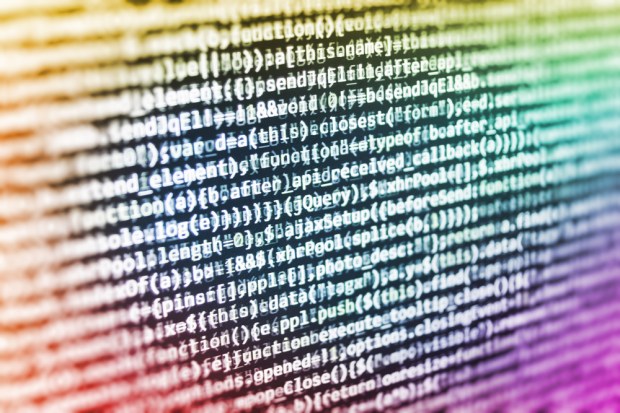Data-R-Us: The Purchase And Sale Of Data

Where do analysts get their data? It’s not like they can just stroll up to a retailer like Data-R-Us and buy it … can they? Well, actually, they more or less can. It’s called a data marketplace, and it’s not just for analysts. These marketplaces are also popular destinations for businesses, governments and market intelligence agencies.
What Is a Data Marketplace?
Like any other online marketplace, a data market is a virtual destination where goods and services are bought and sold. Marketplaces of the eCommerce variety are the most obvious comparison (Amazon, eBay), but think hosted services as well (Uber, Airbnb, Match.com).
When it comes to the goods for sale in data marketplaces, we’re not talking stolen, black market types of data, but rather the good, honest kind of data used by professionals to sharpen their businesses. Business intelligence, advertising figures, demographics, personal information and research and market statistics are just a few of the types of data that are available on these marketplaces.
Organizations are hungry for data these days. Whether they’re leveraging insights on their own behalf or packaging them as information products to sell to others, they can’t seem to get enough. A marketplace has evolved around this hot commodity to help users find, understand and prepare data based on their specific requirements — and to do so quickly and securely in an organized environment.
Of course, the data marketplace isn’t the first place where information has been swept together under one roof. Data warehouses are a thing, too, but marketplaces offer something a little more orderly.
Cataloguing enables buyers to find the data they want, assess its quality and completeness and understand how others have used it before they invest. Curating increases quality and lets users prepare “fit for purpose” data sets on demand. Crowdsourcing improves data every time marketplace stakeholders use it to provide a better data source for all.
For a better understanding, take the following analogy from Network World. A grocery store has flour and all the other ingredients one would need to bake a loaf of bread. It also has a bakery that sells pre-made loaves of bread. In many cases, it also offers a section of prepared foods where shoppers can buy fully assembled sandwiches. Each one adds value to the wheat — and therefore also increases the cost.
In the same way, a data marketplace sells raw data (which has been curated to meet a minimum quality standard) all the way up to a “data sandwich” that is processed from various informational components.
Everybody Loves Data
Know what produces a lot of data? The Internet of Things (IoT). Each year, it produces more data than the entirety of history before it. Forbes reported news that data from connected devices is projected to grow to 600 zettabites (that’s 600 trillion gigabytes) by 2020, and all of it can be used to train artificial intelligence (AI) systems.
Guess what will unlock even greater success in AI? Even more data, which is used in machine learning to train algorithms in pattern recognition, predictions and decision-making. It’s easy to see how the IoT and the artificial intelligences that power it will create a self-perpetuating cycle of data production and usage.
Companies tend to see their own data as a core resource and are reluctant to share it — yet they’re also beginning to realize that they can monetize it by placing it into a data marketplace. For instance, data trends on traffic collected by taxi companies could be leveraged by delivery services to optimize routes.
Another example is the China-based bike rental startup, Mobike. The company analyzed usage patterns over the holidays to determine which cities saw the most tourist traffic and from where those tourists came. Data trends like that would also be useful to the Chinese tourist industry and in the data marketplace, if Mobike chose to monetize it.
Forbes predicted that marketing and advertising professionals will likely be the first to take the IoT data bait. To create targeted retail ads, advertisers must feed their systems with a huge quantity of consumer data, and they are on a perpetual quest to make those ads even more precisely targeted. Later, Forbes projected, vehicle and environmental data could give a boost to urban planning and industrial supply chains.
Democratized Data
Since entering the scene around 2014 or 2015, these eCommerce data marketplaces have often provided two mutually exclusive services. For those who could pay up, plentiful, high-quality crowdsourced data has been easy to access. For those with lesser financial means, only lesser data has been available.
Rachel Carpenter, CEO and co-founder of Intrinio, wants to shape the data marketplace a little differently. “Traditional financial data feeds cost thousands or tens of thousands of dollars,” Carpenter told PYMNTS. “Cheap data feeds are often confusing, inaccurate and difficult to work with.”
“Data is the lifeblood of the financial marketplace,” Carpenter said. “When data is restricted to an elite minority, innovation gets squashed and great ideas are lost due to lack of opportunity. Innovation should be an equal opportunity endeavor.”
Her goal — and the direction in which she believes data marketplaces are going — is to get that data into the hands of innovators in the most affordable and frictionless way possible.
Intrinio’s business platform is to charge customers only for the data they need and to provide access to “clean,” high-quality data to all who need it, regardless of their financial resources. From up-and-coming app designers to the largest banks, better analytics can empower organizations to grow margins and remain competitive, according to Carpenter.
The need for data is only going to grow, she predicts (and Forbes agrees). As consumers demand data faster and in larger quantities, Carpenter believes that standard data sets will become increasingly affordable, until they are eventually free.
